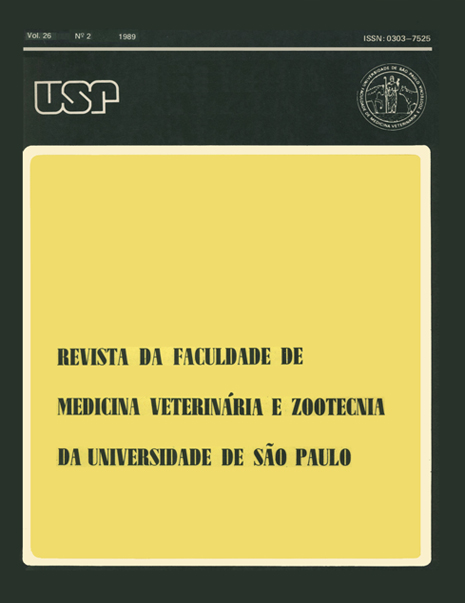Biliary ducts in Nelore cattle. I. Ductus choledocus, ductus hepaticus, ductus cysticus, vesica fellea and anastomosis
DOI:
https://doi.org/10.11606/issn.2318-3659.v26i2p153-163Keywords:
Anatomy of cattle, Liver, Bile ductsAbstract
It was studied, by dissecation, the biliary ducts on 36 livers removed from adult Nelore cattle. The results obtained were: 1) The ductus choledocus is formed by the convergence of the ductus hepaticus and ductus cysticus (96.7%) or by the convergence of the ramus principalis dexter, ramus principalis sinister and ductus cysticus (3.3%); 2) The ductus hepaticus is caracterized in 96.7% of the cases and it receives tributaries (40.0%) from the lobus quadratus (3.3%), from the lobus dexter, lobus caudatus and lobus quadratus (13.3%), from the lobus dexter and lobus quadratus (6.7%) or from the lobus dexter (6.7%); 3) The ductus cysticus also receives tributaries (83.3%) from the lobus dexter and lobus quadratus (43.3%), from the lobus quadratus (20.0%), from the lobus dexter (16.7%) or from the lobus dexter, lobus caudatus and lobus quadratus (3.3%); 4) The vesica fellea is too big in these animals and it receives some hepatocystic ducts (53.3%) from the lobus dexter (30.0%), from the lobus quadratus (13.3%), from the lobus quadratus and lobus sinister (3.3%), lobus dexter, lobus quadratus and lobus sinister (3.3%) or from the lobus quadratus, lobus caudatus and lobus dexter (3.3%); 5) Some livers (73.3%) have showed anastomosis between the ramus principalis dexter or the ramus principalis sinister and the ductus cysticus or the vesica fellea. This anastomosis and the hepatocystic ducts form an important system of sustentation of the vesica fellea and maybe they could have a function of emptying and fulfilling of the vesica fellea.


